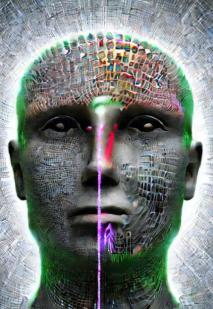Diversos
Inteligencia artificial
La inteligencia artificial (IA) es una rama de la informática que busca crear máquinas capaces de realizar tareas que requieren inteligencia humana, como reconocer el habla, entender el lenguaje natural y tomar decisiones. La IA se puede dividir en dos categorías principales: IA estrecha o débil, diseñada para realizar una tarea específica, y IA general o fuerte, capaz de realizar cualquier tarea intelectual que un humano pueda.
Una de las formas en que la IA puede mejorar nuestro ambiente es ayudando a reducir las emisiones de carbono. Por ejemplo, los sistemas de
gestión de energía con IA pueden optimizar el uso de las fuentes de energía renovable y mejorar la eficiencia energética en los edificios. La IA también se puede utilizar para monitorear y predecir
los patrones climáticos para mejorar los rendimientos de los cultivos y reducir el uso de agua en la agricultura. En transporte, los sistemas de gestión del tráfico con IA pueden ayudar a reducir la
congestión y las emisiones de los vehículos.
La IA también se puede utilizar para mejorar la gestión de los recursos naturales, como el agua y los bosques. Por ejemplo, los sistemas con
IA pueden utilizarse para monitorear y detectar la tala ilegal o el tráfico de animales, y para predecir y prevenir los incendios forestales. Además, la IA se puede utilizar para mejorar el monitoreo
y la gestión de los recursos hídricos, como predecir las inundaciones e identificar las áreas en riesgo de sequía.
En general, la IA tiene el potencial de mejorar significativamente nuestro ambiente al ayudar a reducir las emisiones de carbono, mejorar la
eficiencia energética y de los recursos, y proteger los recursos naturales.
La inteligencia artificial también puede mejorar nuestro nivel cultural de varias maneras.
Una de las formas es mediante la creación y mejora de sistemas de educación personalizados que se adaptan a las necesidades individuales de los estudiantes. Los sistemas de aprendizaje automático
pueden analizar el rendimiento de los estudiantes y adaptar el contenido y el ritmo del curso en consecuencia.
La IA también puede ayudar a preservar y difundir la cultura y el patrimonio histórico. Los sistemas de IA pueden ser utilizados para
catalogar y analizar grandes conjuntos de datos sobre arte, arqueología y patrimonio histórico, permitiendo una mejor comprensión y apreciación de estas obras y su contexto histórico. Los sistemas de
realidad aumentada y virtual pueden ayudar a dar vida a estos tesoros culturales y hacerlos más accesibles al público.
Además, la IA también puede ayudar a mejorar la traducción automática de idiomas, lo que puede facilitar el acceso a la literatura, el cine
y otras formas de arte y cultura en diferentes idiomas.
En resumen, la IA puede mejorar nuestro nivel cultural mediante la personalización de la educación, la preservación, difusión del patrimonio histórico y cultural y la facilitación del acceso a la
cultura a través de la traducción automática.
La inteligencia artificial puede ayudarnos a mejorar nuestras habilidades laborales de varias maneras.
Una de las formas es mediante el uso de tecnologías de aprendizaje automático para analizar y mejorar el rendimiento laboral. Los sistemas de IA pueden analizar datos sobre el rendimiento de los
empleados, como el tiempo de respuesta, la eficiencia y la calidad del trabajo, para identificar áreas de mejora y ayudar a los empleados a desarrollar habilidades específicas.
La IA también puede ayudar a automatizar tareas laborales, lo que permite a los empleados dedicar más tiempo a tareas que requieren
habilidades humanas, como la creatividad y la toma de decisiones. Esto puede ayudar a mejorar las habilidades laborales y aumentar la eficiencia en el trabajo.
La IA también puede ayudar a los empleados a tomar decisiones más informadas mediante el uso de sistemas de análisis predictivo y el
aprendizaje automático para analizar grandes conjuntos de datos. Esto puede ayudar a los empleados a identificar patrones y tendencias en los datos, lo que les permite tomar decisiones mejor
fundamentadas.
Además, la IA también puede ayudar a los empleados a colaborar y comunicarse de manera más eficiente mediante el uso de herramientas de
colaboración y comunicación automatizadas.
En resumen, la IA puede ayudarnos a mejorar nuestras habilidades laborales mediante el análisis del rendimiento laboral, la automatización
de tareas, la toma de decisiones informadas, la colaboración y comunicación eficiente.
How Tech Changes Agriculture
Agriculture could be one of the most undervalued industries. Most people don’t even think about where their food is coming from. Even so, the industry is under great strain to supply enough food for everybody while trying to meet the needs of today’s consumers to produce and sell more organic products and to reduce the environmental impacts.
For this reason, there are many new technologies that are being tested and developed to meet the current demands. These are some innovations that are changing agriculture and will continue to transform the industry for the foreseeable future.
Vertical Farming
Vertical farming was born from the need to have more sustainable and optimized agriculture techniques. It consists of growing crops and stacking them in racks on top of one another, generally in enclosed spaces. Most of these farms are hydroponic, which means they embrace the approach of growing plants without soil, but instead using a nutrient-rich solution. Meanwhile, some other farms use the aeroponics method of growing crops, by applying a nutrient-rich mist to the roots.
Vertical farming has many benefits in comparison to traditional farming. Because the environment is completely controlled, the farmers can monitor and optimize anything from temperature and humidity to water usage. These farms use 70 to 95% less water than normal farming, depending on the type of crop. Another benefit is that vertical farming requires less space so the farms can be located closer to urban areas and reduce the CO2 emission from transportation.
The best part is in terms of environmental sustainability. Because it is done in an enclosed space, farmers don’t have to worry about pests. Therefore, this reduces the use of pesticides and translates to fewer chemicals entering the soils, and polluting the water. The only downside is that the energy consumptions are higher for vertical farmers, but most of these companies use green energy sources like solar power, recycle rainwater, and other methods to reduce their carbon footprint. Overall vertical farms are more sustainable than traditional farms.
Automation
Traditional farming is getting more pressure each year to supply the demand from all over the world. Automation technologies driven by Machine Learning are being implemented to optimize and increase production. These technologies not only quicken the process, but they also reduce the workload of the farmworkers. The most iconic example in agriculture is autonomous robots.
There are already autonomous tractors and several other machines that perform tasks like harvesting, watering, preparing the land, and so on. Autonomous tractors can’t be found in the market yet, but there are already many prototypes being improved with new technologies. These tractors use AI, GPS, computer vision, and many other tech features to make many tasks driverless.
If these tractors become common in farms, agriculture workers will transition into more technical jobs like setting up the variables for the program that will control the autonomous machines and doing the maintenance. The tech skill needed will be really easy to learn via short online courses There are also machines developed to take care of weeding and crop maintenance. In fact, many vertical farms already use autonomous robots to take care of the most basic tasks.
Data Science
Data insights are changing how we see the world, and agriculture is not an exception. Farmers collect tons of information about their crops—production rates, seeds planted, water consumption, pesticides needed, and so on—each season. By applying data science,it is possible to use this information to increase production and optimize the harvest.
For example, by using drones and satellites, data farmers can collect every detail from nitrogen levels and soil conditions to plant health and temperature. Later, using data science tools, they can determine targeted inputs for the harvest. Also, this technology allows farmers to have insights into and make accurate predictions on farm-related affairs.
Artur Meyster.




